
Donkey Kong 3 is a platform shooter video game developed and published by Nintendo. It is the third installment in the Donkey Kong series and it was released for arcades worldwide in 1983 and the Family Computer in 1984, then later released in North America for the Nintendo Entertainment System in 1986. The gameplay departs from previous Donkey Kong games, being primarily a shooter game, and starring an exterminator named Stanley instead of Mario.

Sid Meier's Civilization II is a turn-based strategy video game in the Civilization series, developed and published by MicroProse. It was released in 1996 for PCs, and later ported to the PlayStation by Activision.

Turok: Dinosaur Hunter is a first-person shooter video game developed by Iguana Entertainment and published by Acclaim for the Nintendo 64 console and Microsoft Windows. It was released in 1997 in North America and Europe. Turok is an adaptation of the Valiant Comics comic book series of the same name. The player controls Turok, a Native American warrior, who must stop the evil Campaigner from conquering the universe with an ancient and powerful weapon.

Trespasser is a 1998 action-adventure video game developed by DreamWorks Interactive and published by Electronic Arts for Microsoft Windows. The game serves as a sequel to the 1997 film The Lost World: Jurassic Park, taking place a year after the film's events. Players control Anne, the sole survivor of a plane crash that leaves her stranded on a remote island with genetically engineered dinosaurs. It features the voices of Minnie Driver as Anne and Richard Attenborough as John Hammond, reprising his role from the film series.

Oddworld: Abe's Oddysee is a platform video game developed by Oddworld Inhabitants and published by GT Interactive. It was released in 1997 for the PlayStation game console, and computers running MS-DOS and Microsoft Windows in North America, Australia, New Zealand, and Europe. Emulated versions for the PlayStation 3 via PlayStation Network were released in 2009, 2010, and 2013. It was then later released as a PS5 emulation in 2022 in Asia, and then later parts of the world.

Aliens Versus Predator is a 1999 science fiction first-person shooter video game developed by Rebellion Developments and published by Fox Interactive for Microsoft Windows and Mac OS X. It is a part of the Alien and Predator crossover franchise, Alien vs. Predator. A sequel, Aliens Versus Predator 2, was developed by Monolith Productions and released by Sierra in 2001.

Claw is a 2D side-scroller platform video game published by Monolith Productions in 1997 about an anthropomorphic pirate cat who sets on a quest to find an ancient amulet while fighting enemies and solving puzzles. It is Monolith's second release after Blood, which was released that same year in May.

Star Wars: Force Commander is a real-time strategy video game released for the Microsoft Windows platform on March 17, 2000. It was co-developed by Ronin Entertainment and LucasArts, and published by LucasArts. Its plot interweaves between Star Wars: A New Hope and Return of the Jedi, taking place in key battles. Peter McConnell created remixed tracks of John Williams's original score with influences from hard rock and techno music.
Ultimate Soccer Manager (USM) is an association football management video game series for DOS, Commodore Amiga and Windows 95, produced by Impressions and distributed by Sierra from 1995 to 1999. The game was a massive hit in Europe, although it gained little support in Japan.

The Elder Scrolls II: Daggerfall is an open-world action role-playing video game published by Bethesda Softworks. The second game in the Elder Scrolls series was released on September 20, 1996, for MS-DOS, following the success of 1994's The Elder Scrolls: Arena. The story follows the player, sent by the Emperor, to free the ghost of King Lysandus from his earthly shackles and discover what happened to a letter sent from the Emperor to the former queen of Daggerfall.
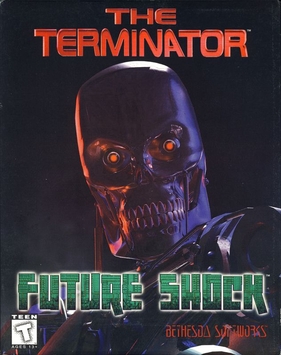
The Terminator: Future Shock is a first-person shooter video game based on The Terminator fictional universes developed and published by Bethesda Softworks in 1995. It was one of the first games in the first-person shooter genre to feature true, fully texture-mapped 3D environments and enemies, and pioneered the use of mouse-look control.
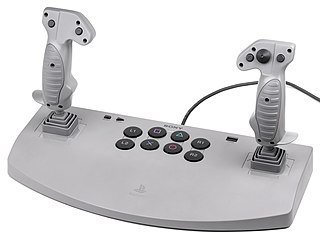
The PlayStationAnalog Joystick (SCPH-1110) is Sony's first analog controller for the PlayStation, and is the precursor to the PlayStation Dual Analog Controller. It is often incorrectly referred to as the "Sony Flightstick".

Skynet is a computer game based on the Terminator media franchise. It was intended as an expansion pack for the predecessor The Terminator: Future Shock, but was adapted into a standalone product. The game was published by Bethesda Softworks in 1996.
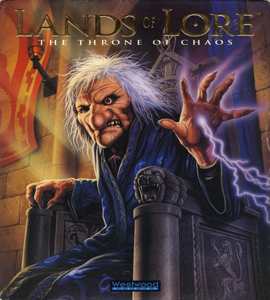
Lands of Lore: The Throne of Chaos is a 1993 role-playing video game developed by Westwood Studios and published by Virgin Games for MS-DOS, the NEC PC-9801, and FM Towns. It was the first installment of the Lands of Lore series. The player travels around various environments, collecting items and battling monsters in an attempt to save the kingdom from a witch named Scotia, who has acquired shape-shifting abilities.
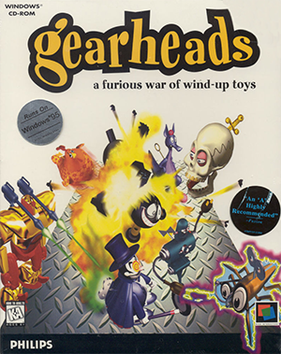
Gearheads is a strategy video game developed by R/GA Interactive and Philips Media, and published by Philips Media for Microsoft Windows and Mac OS in June 1996. The player deploys wind-up toys to get them across an arena while attempting to prevent toys from crossing from the other side. Players can play against the computer or another player. Single, customisable games can be played, or the player can play a series of games with set rules and a limited number of lives in a tournament.

Dark Souls II is a 2014 action role-playing game developed by FromSoftware and published by Bandai Namco Games. An entry in the Dark Souls series, it was released for Windows, PlayStation 3, and Xbox 360. Taking place in the kingdom of Drangleic, the game features both player versus environment (PvE) and player versus player (PvP) gameplay. Dark Souls II was released in March 2014 after some initial delays, with the Windows version being released the following month.
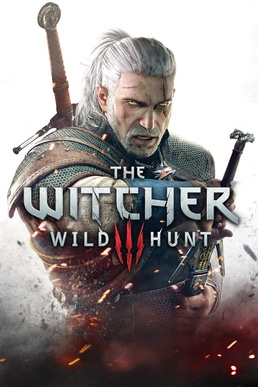
The Witcher 3: Wild Hunt is a 2015 action role-playing game developed and published by CD Projekt. It is the sequel to the 2011 game The Witcher 2: Assassins of Kings and the third game in The Witcher video game series, played in an open world with a third-person perspective. The games follow the The Witcher series of fantasy novels written by Andrzej Sapkowski.

F1 Manager is a sports video game developed by Intelligent Games and published by EA Sports exclusively for Microsoft Windows. It was the last officially licensed F1 Management game until F1 Manager 2022 by Frontier Developments.

Hollow Knight is a 2017 Metroidvania video game developed and published by independent developer Team Cherry. In the game, the player controls the Knight, a nameless insectoid warrior, who explores Hallownest, a fallen kingdom plagued by a supernatural disease. The game is set in diverse subterranean locations, and it features friendly and hostile insectoid characters and numerous bosses. Players have the opportunity to unlock new abilities as they explore each location, along with pieces of lore and flavor text that are spread throughout the kingdom.

D.A. Pursuit of Justice is a three-part video game series based around a criminal lawyer who is trying to convict guilty people. The three individual cases were sold separately or also as a three-case 8-CD bundle published by Alpha Software, shipped on September 15, 1997. The game is part of Legacy Software's RealPlay Series.


















